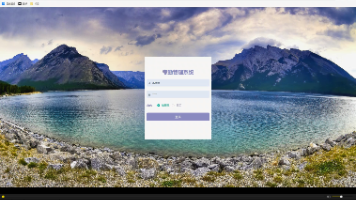TensorFlow 入门
TensorFlow 是由 Google Brain 团队开发的第二代深度学习框架(前身为 DistBelief),于2015年11月开源。
·

TensorFlow 深度学习入门指南
1. TensorFlow 简介
TensorFlow 是由 Google Brain 团队开发的第二代深度学习框架(前身为 DistBelief),于2015年11月开源。它已成为全球最流行的机器学习平台之一,被广泛应用于:
- 计算机视觉(图像分类、目标检测等)
- 自然语言处理(机器翻译、文本生成等)
- 推荐系统(个性化推荐、广告点击率预测)
- 语音识别(语音转文字、声纹识别)
核心架构
TensorFlow 采用数据流图(Data Flow Graph)的编程模型,主要组件包括:
-
张量(Tensor):多维数据容器,是框架中的基本计算单元。例如:
- 标量:0维张量(如
5) - 向量:1维张量(如
[1,2,3]) - 矩阵:2维张量(如
[[1,2],[3,4]]) - 更高维张量(如图像数据通常是4维:
[batch,height,width,channels])
- 标量:0维张量(如
-
操作(Operation):计算图中的节点,每个操作接受零个或多个张量输入,产生零个或多个张量输出。例如:
- 数学运算:
tf.add,tf.matmul - 数组操作:
tf.concat,tf.reshape - 神经网络层:
tf.nn.relu,tf.nn.softmax
- 数学运算:
-
会话(Session):在1.x版本中用于执行计算图的环境,负责分配计算资源和执行操作。在2.x中已被简化。
版本演进
TensorFlow 2.x 相比 1.x 的主要改进:
- 即时执行(Eager Execution):默认启用,允许像普通Python代码一样逐行执行操作
- API简化:减少冗余API,整合Keras作为高级API
- 性能优化:改进了XLA编译器,支持自动混合精度训练
- 生态整合:更好地支持TensorBoard、TF Lite、TF Serving等工具
2. 安装与环境配置
系统需求
- 操作系统:Windows 10/11、Linux(Ubuntu 16.04+)、macOS 10.12+
- Python版本:3.7-3.10
- GPU支持(可选):
- NVIDIA GPU(计算能力3.5+)
- CUDA工具包(11.2)
- cuDNN SDK(8.1.0)
安装步骤
CPU版本安装
# 基础安装(包含CPU支持)
pip install tensorflow
# 安装指定版本
pip install tensorflow==2.9.0
GPU版本安装
# 完整GPU支持版本
pip install tensorflow[and-cuda]
# 或者传统GPU版本
pip install tensorflow-gpu
虚拟环境推荐
建议使用conda或venv创建独立环境:
# 使用conda创建环境
conda create -n tf_env python=3.8
conda activate tf_env
# 使用venv创建环境
python -m venv tf_env
source tf_env/bin/activate # Linux/macOS
tf_env\Scripts\activate # Windows
环境验证
import tensorflow as tf
# 检查版本
print("TensorFlow版本:", tf.__version__)
# 检查GPU可用性
print("GPU设备列表:", tf.config.list_physical_devices('GPU'))
# 简单计算验证
a = tf.constant([[1, 2], [3, 4]])
b = tf.constant([[1, 1], [1, 1]])
print("矩阵相加结果:\n", (a + b).numpy())
3. 基本概念与操作
张量操作详解
创建张量
# 从Python列表创建
t1 = tf.constant([1, 2, 3]) # 1D张量(向量)
# 从NumPy数组创建
import numpy as np
array = np.array([[1, 2], [3, 4]])
t2 = tf.constant(array) # 2D张量(矩阵)
# 特殊张量
zeros = tf.zeros([2, 3]) # 全零矩阵
ones = tf.ones([3, 2]) # 全1矩阵
random = tf.random.normal([2, 2], mean=0.0, stddev=1.0) # 正态分布随机数
张量属性
t = tf.constant([[1, 2], [3, 4]])
print("形状:", t.shape) # 输出: (2, 2)
print("数据类型:", t.dtype) # 输出: <dtype: 'int32'>
print("维度:", t.ndim) # 输出: 2
print("元素总数:", tf.size(t).numpy()) # 输出: 4
张量运算
# 基本数学运算
a = tf.constant([1, 2, 3])
b = tf.constant([4, 5, 6])
add = a + b # 逐元素相加
multiply = a * b # 逐元素相乘
# 广播机制
c = tf.constant([[1], [2], [3]]) # 形状 (3, 1)
d = tf.constant([1, 2, 3]) # 形状 (3,)
result = c + d # 广播后形状 (3, 3)
# 矩阵运算
mat_a = tf.constant([[1, 2], [3, 4]])
mat_b = tf.constant([[5, 6], [7, 8]])
mat_mul = tf.matmul(mat_a, mat_b) # 矩阵乘法
变量(Variable)详解
创建与更新
# 创建可训练变量
weights = tf.Variable(tf.random.normal([3, 2])) # 3x2权重矩阵
bias = tf.Variable(tf.zeros([2])) # 2元素偏置向量
# 修改变量值
weights.assign(tf.ones([3, 2])) # 全部赋值为1
weights.assign_add(tf.constant([[0.1, 0.1], [0.1, 0.1], [0.1, 0.1]])) # 增量更新
变量约束
# 添加约束条件
constrained_var = tf.Variable(
initial_value=tf.random.uniform([2, 2]),
constraint=lambda x: tf.clip_by_value(x, 0, 1) # 限制值在0-1之间
)
4. 构建简单模型
线性回归完整实现
import matplotlib.pyplot as plt
# 1. 准备合成数据
np.random.seed(42)
X = np.linspace(0, 10, 100).reshape(-1, 1)
y = 3 * X + 2 + np.random.randn(100, 1) * 2 # y = 3x + 2 + 噪声
# 转换为TensorFlow张量
X_tf = tf.constant(X, dtype=tf.float32)
y_tf = tf.constant(y, dtype=tf.float32)
# 2. 定义模型参数
W = tf.Variable(tf.random.normal([1, 1]), name='weight')
b = tf.Variable(tf.zeros([1]), name='bias')
# 3. 定义训练函数
def train_step(X, y, learning_rate=0.01):
with tf.GradientTape() as tape:
y_pred = tf.matmul(X, W) + b
loss = tf.reduce_mean(tf.square(y - y_pred))
gradients = tape.gradient(loss, [W, b])
optimizer = tf.optimizers.SGD(learning_rate)
optimizer.apply_gradients(zip(gradients, [W, b]))
return loss.numpy()
# 4. 训练过程
epochs = 100
loss_history = []
for epoch in range(epochs):
loss = train_step(X_tf, y_tf)
loss_history.append(loss)
if epoch % 10 == 0:
print(f"Epoch {epoch}, Loss: {loss:.4f}, W: {W.numpy()[0][0]:.2f}, b: {b.numpy()[0]:.2f}")
# 5. 可视化结果
plt.figure(figsize=(12, 5))
plt.subplot(1, 2, 1)
plt.scatter(X, y, label='Original data')
plt.plot(X, W.numpy() * X + b.numpy(), 'r-', label='Fitted line')
plt.title("Regression Fit")
plt.legend()
plt.subplot(1, 2, 2)
plt.plot(loss_history)
plt.title("Training Loss")
plt.xlabel("Epoch")
plt.ylabel("MSE Loss")
plt.show()
5. Keras 高级API深入
模型构建方式
1. Sequential API
from tensorflow.keras.models import Sequential
from tensorflow.keras.layers import Dense, Dropout, BatchNormalization
model = Sequential([
Dense(64, activation='relu', input_shape=(10,)), # 输入层
BatchNormalization(),
Dense(128, activation='relu'), # 隐藏层
Dropout(0.5),
Dense(64, activation='relu'),
Dense(1) # 输出层
])
2. Functional API
from tensorflow.keras import Input, Model
inputs = Input(shape=(28, 28, 1))
x = layers.Conv2D(32, 3, activation='relu')(inputs)
x = layers.MaxPooling2D()(x)
x = layers.Flatten()(x)
outputs = layers.Dense(10, activation='softmax')(x)
model = Model(inputs=inputs, outputs=outputs)
模型训练配置
# 编译模型
model.compile(
optimizer=tf.keras.optimizers.Adam(learning_rate=0.001),
loss='binary_crossentropy',
metrics=['accuracy', tf.keras.metrics.AUC()]
)
# 回调函数配置
callbacks = [
tf.keras.callbacks.EarlyStopping(patience=3),
tf.keras.callbacks.ModelCheckpoint('best_model.h5'),
tf.keras.callbacks.TensorBoard(log_dir='./logs')
]
# 训练模型
history = model.fit(
X_train, y_train,
validation_data=(X_val, y_val),
epochs=50,
batch_size=32,
callbacks=callbacks
)
6. 常见应用场景扩展
图像分类(CNN示例)
# 构建CNN模型
model = Sequential([
layers.Conv2D(32, 3, activation='relu', input_shape=(28, 28, 1)),
layers.MaxPooling2D(),
layers.Conv2D(64, 3, activation='relu'),
layers.MaxPooling2D(),
layers.Flatten(),
layers.Dense(128, activation='relu'),
layers.Dense(10, activation='softmax')
])
# 编译
model.compile(optimizer='adam',
loss='sparse_categorical_crossentropy',
metrics=['accuracy'])
# 数据增强
from tensorflow.keras.preprocessing.image import ImageDataGenerator
datagen = ImageDataGenerator(
rotation_range=20,
width_shift_range=0.2,
height_shift_range=0.2,
horizontal_flip=True)
文本处理(LSTM示例)
# 文本分类模型
model = Sequential([
layers.Embedding(vocab_size, 64),
layers.Bidirectional(layers.LSTM(64)),
layers.Dense(64, activation='relu'),
layers.Dense(1, activation='sigmoid')
])
7. 深入学习资源
官方学习路径
-
初学者路线:
- TensorFlow Core教程
- Keras指南
- 官方示例代码库
-
中级路线:
- 自定义训练教程
- 分布式训练指南
- TensorFlow Extended (TFX)
-
高级路线:
- 模型优化工具包
- TensorFlow模型服务
- 研究论文复现
推荐课程体系
-
Coursera专项课程:
- 《TensorFlow: Data and Deployment》
- 《Advanced Machine Learning with TensorFlow》
-
书籍进阶:
- 《Deep Learning with TensorFlow and Keras》
- 《TensorFlow Reinforcement Learning》
8. 进阶发展方向
模型部署技术栈
-
TensorFlow Serving:高性能模型服务系统
- 支持模型版本控制
- 自动批量处理
- REST/gRPC接口
-
TensorFlow Lite:移动和嵌入式部署
- 量化技术减小模型体积
- 支持Android/iOS/嵌入式Linux
- 硬件加速器支持(如Edge TPU)
性能优化技巧
-
混合精度训练:
policy = tf.keras.mixed_precision.Policy('mixed_float16') tf.keras.mixed_precision.set_global_policy(policy) -
分布式训练:
strategy = tf.distribute.MirroredStrategy() with strategy.scope(): model = create_model() model.compile(...) -
图优化:
tf.config.optimizer.set_jit(True) # 启用XLA编译
生态整合方向
-
TFX (TensorFlow Extended):端到端ML管道
- 数据验证
- 特征工程
- 模型分析
-
TensorFlow Probability:概率编程
- 贝叶斯神经网络
- 不确定性量化
- 统计建模
-
TensorFlow Graphics:计算机图形学
- 3D深度学习
- 渲染与几何处理
更多推荐
 已为社区贡献16条内容
已为社区贡献16条内容










所有评论(0)